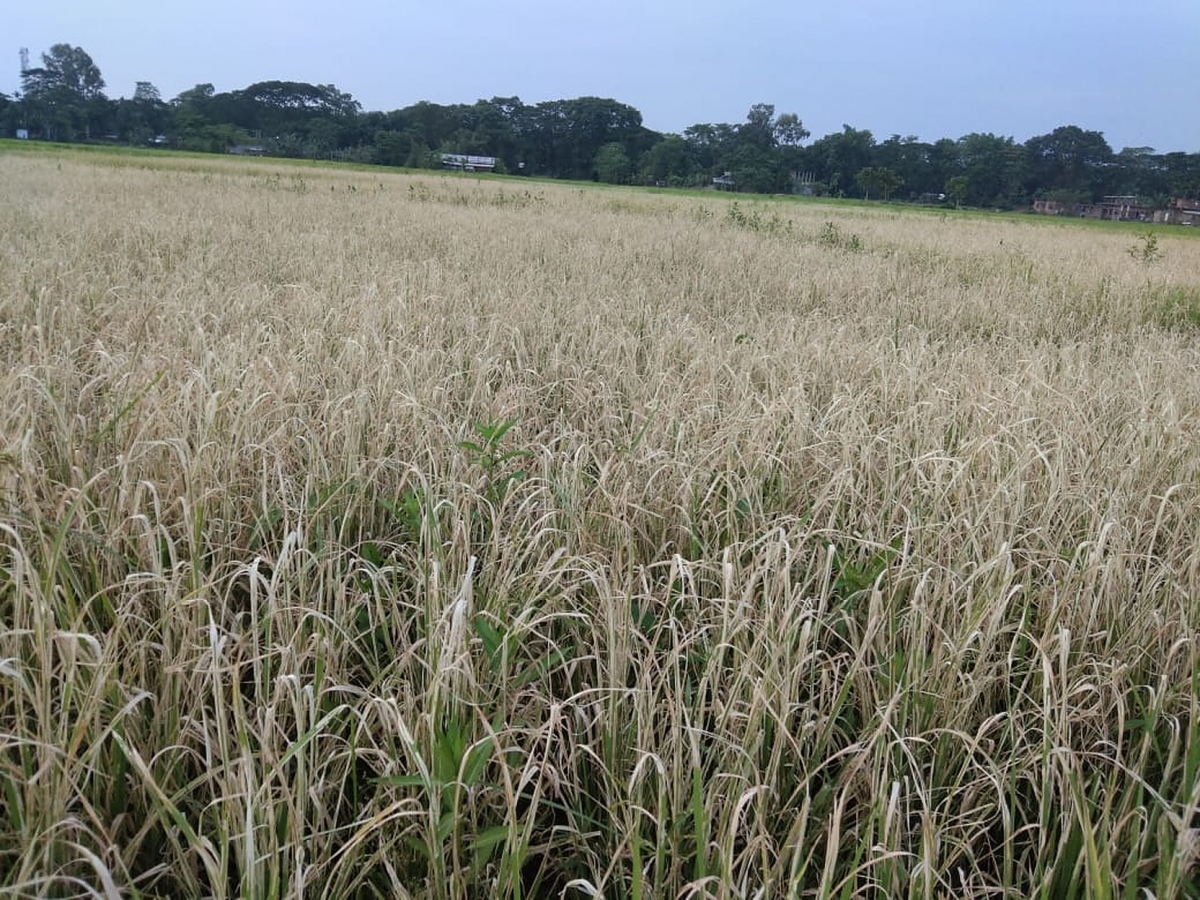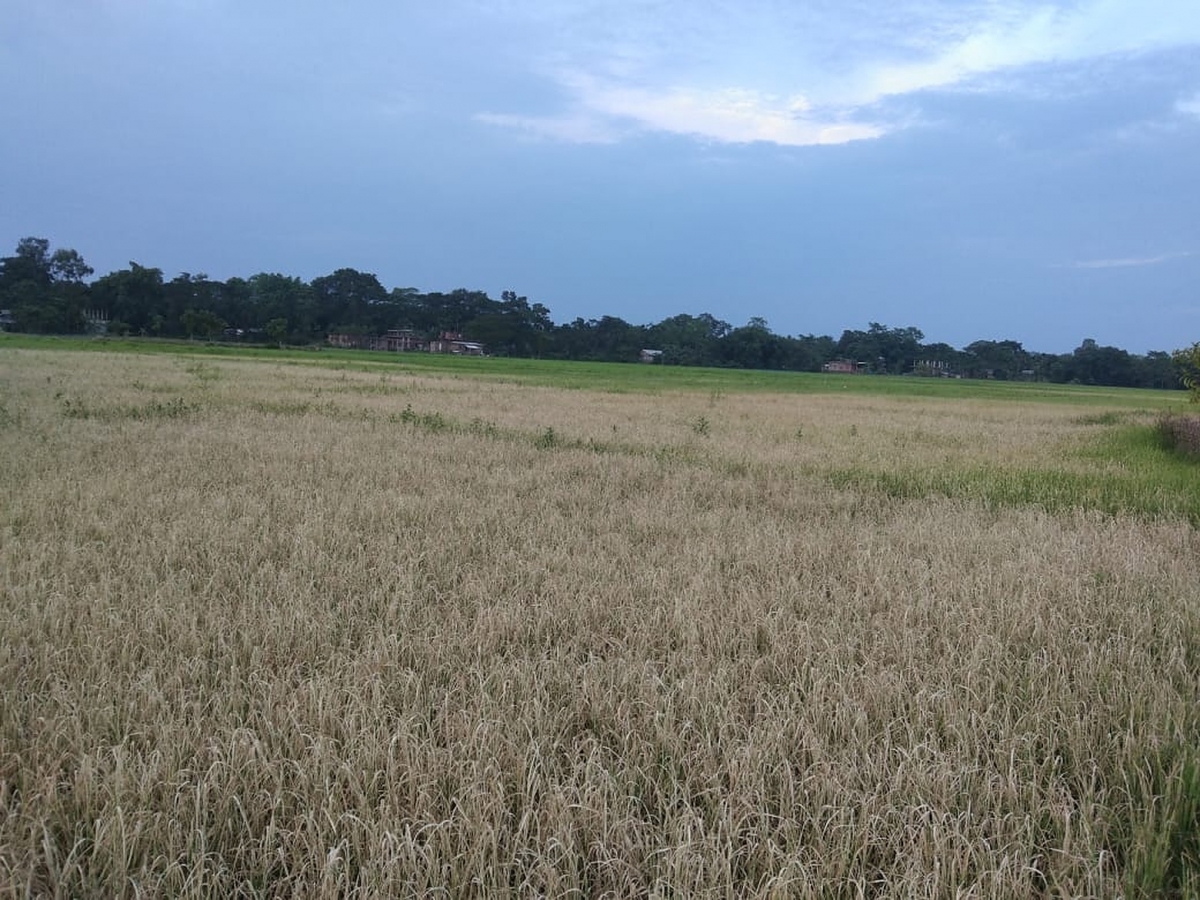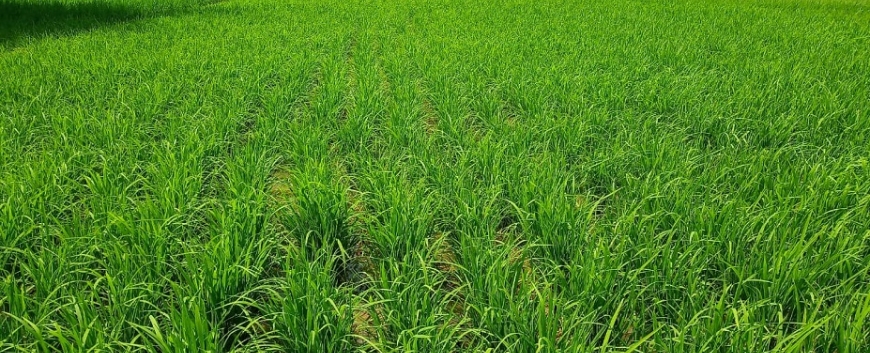When Assam floods brought pests, scientists & farmers were ready
September 2020: If there is one thing certain about Assam every year, it is the annual flood and the widespread devastation caused by it. This disaster has become an annual calamity and every time lives are lost, millions of people get displaced, villages, crops, and infrastructures get destroyed.
Every year, there can be seen huge increase of rice hispa infestation on post-flood situation in rice field. Likewise, last year too, there were huge crop losses in Sivasagar district due to rice hispa infestation after post flood.


Picture: Rice hispa infestation in field
But this year after three floods in the month of July itself, post flood rice hispa infestation could be drastically reduced by taking necessary actions in time by MSSRF staffs of the RESILIENCE Project of Assam with the help of Assam Agricultural University. The concept of plant clinic was initiated by MSSRF to find the causes of diseases in fields with the help of resource persons in a very short period of time. Even during lockdown, plant clinics were held through various ICTs. The plant clinics helped early detection of rice hispa, necessary pesticides were applied and other measures were taken with the help of AAU and the rice hispa infestation was brought under control which saved the farmers from incurring crop losses like the previous years.
Says Hiren Dutta, a farmer from Sivasagar, “We have been facing the problem of Hispa for quite some time, even during last year. Few farmers also got very low returns due to losses because of this. This year, however the project staff helped us by informing that just after the flood there will be hispa attack so we could prepare before time. They also provided
necessary pesticides for us. So only after one – two days after infestation we applied the pesticides as suggested and got rid of the pests.”
Gargee Baruah, Development Associate, MSSRF says, “Hispa attack is very common during post-flood situation; during Kharif 2019 also we encountered the same problem. Unfortunately, last time as it was the initial stages of the RESILIENCE project we couldn’t intervene on time with information regarding the pest attack. Based on previous experience and with expert help, we disseminated information prior to the infestation. Our lead farmers informed us at the initial stages so we took immediate measures and successfully controlled infestation.”
This work was carried out under RESILIENCE project funded by Ministry of Foreign Affairs, Norway/ the Norwegian Embassy, New Delhi, in partnership with Orissa University of Agriculture and Technology, Assam Agricultural University, Indian Council of Agricultural Research - National Rice Research Institute, M S Swaminathan Research Foundation, International Water Management Institute and co-ordinated by the Norwegian Institute of Bioeconomy Research.
Written by: Pompi Dutta
Edited by: Jayashree B


